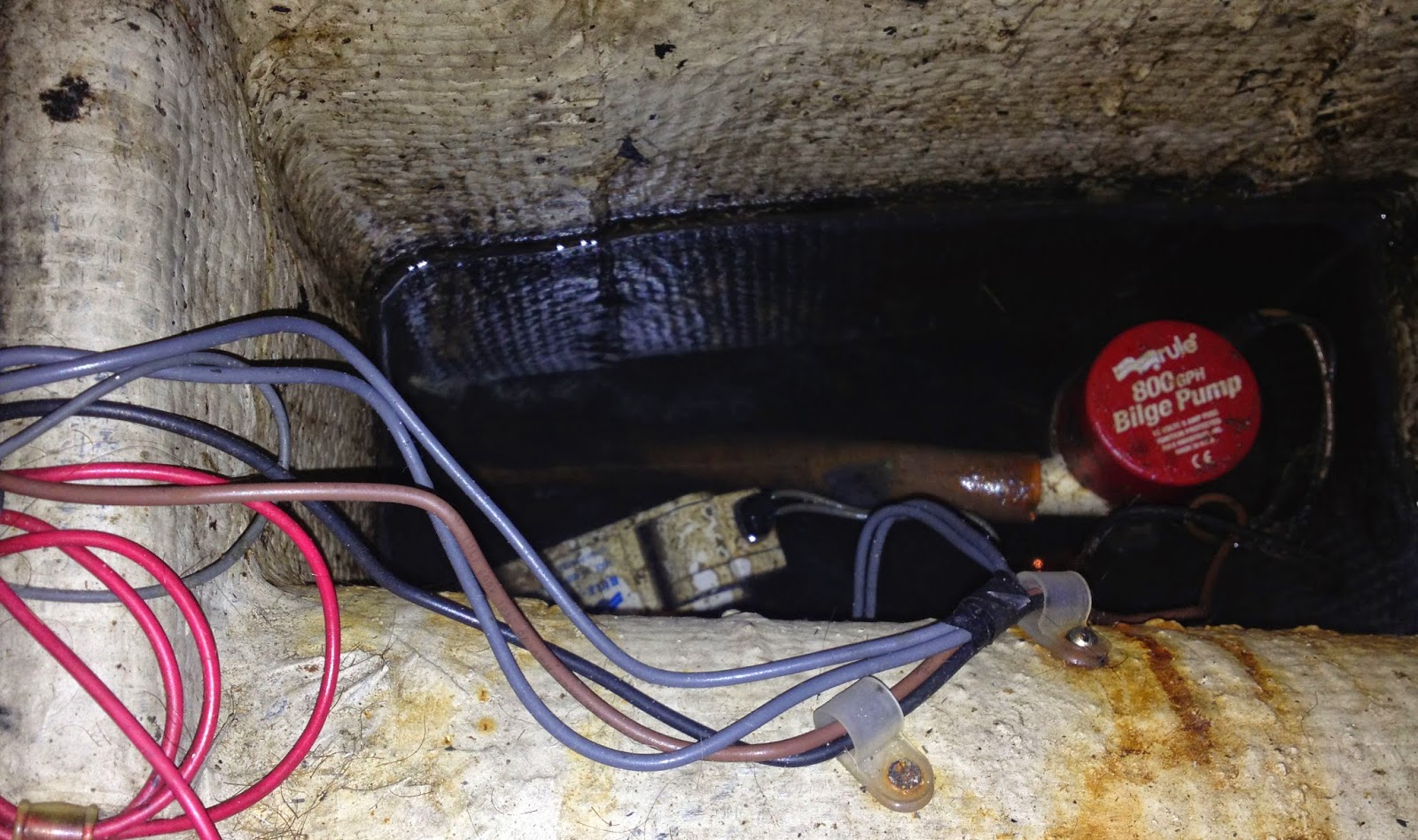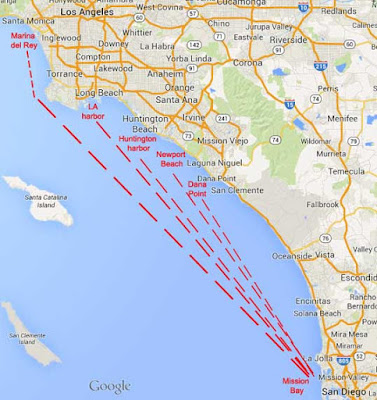Here's the bad news. Your bilge is not dry, in fact, it is wet. And not just wet, there are many inches of stagnant water sloshing around your bilge. Now here is the good news. You are not alone. Many Sailors, if not most Sailors, are going about the business of their lives, puttering their vessels in and out of harbors while all the while, their boats are slowly drowning in the Sea.
Tragedy? Not really. This is common practice. All that's required to deal with this problem is a healthy sense of detachment from the undeniable fact that your beloved sailboat is persistently taking on water.
You want a dry and crisp, water-tight boat, but, in fact, you own a sinking ship.
 |
| My bilge: always damp, and by damp I mean flooding with Sea water. |
Don't get me wrong. There are things you should do. And you should do these things. But, you will sleep much better at night once you accept your boat's mortality.
Until that acceptance comes I recommend the following:
1.
Make sure your electric bilge pump is in good working order.
Is the float installed at a height that maximizes the drainage.?
Is the pump mounted at the best possible location in your bilge to maximize outflow.
Is the size/model of the bilge pump (electric rating/water volume outflow) appropriate for the size of both your boat and your battery bank?
2.
Is your battery bank and /or shore power situation in good working order. i.e. If you were to leave your boat alone for many months, do you have confidence that there would be a reliable source of power for the bilge pump (in case, it is being called upon to drain often)?
3.
Is your manual bilge pump in good working order?
Check the gaskets and build up of rust on the inside of this contraption. These are often neglected parts of a sailboat.
And where is that manual pump handle?
4.
Look for leaks in all the likely spots (the seacocks, the propeller shaft, depth-finder .... any place on the bottom of the boat where the hull has been opened up to install some hardware). This part can be done from the inside while the floating.
However, most fixes will require hauling out the boat to properly reseal these breaches of dryness.
In closing. Fight like hell to keep your bilge dry and your boat un-sunk. But do not beat yourself up, if despite your best efforts, your bilge remains un-dry and is always taking on a few inches of water.
In general, a few inches every month is fine. Don't panic.
A few inches every day is a crises. Panic.
Please follow the links below for the full 'How to Sail your Sailboat' series:
How to sail your sailboat: putting your boat on the rocks with style.
How to sail your sailboat: owning your cockpit.
How to sail your sailboat: climbing the mast.























